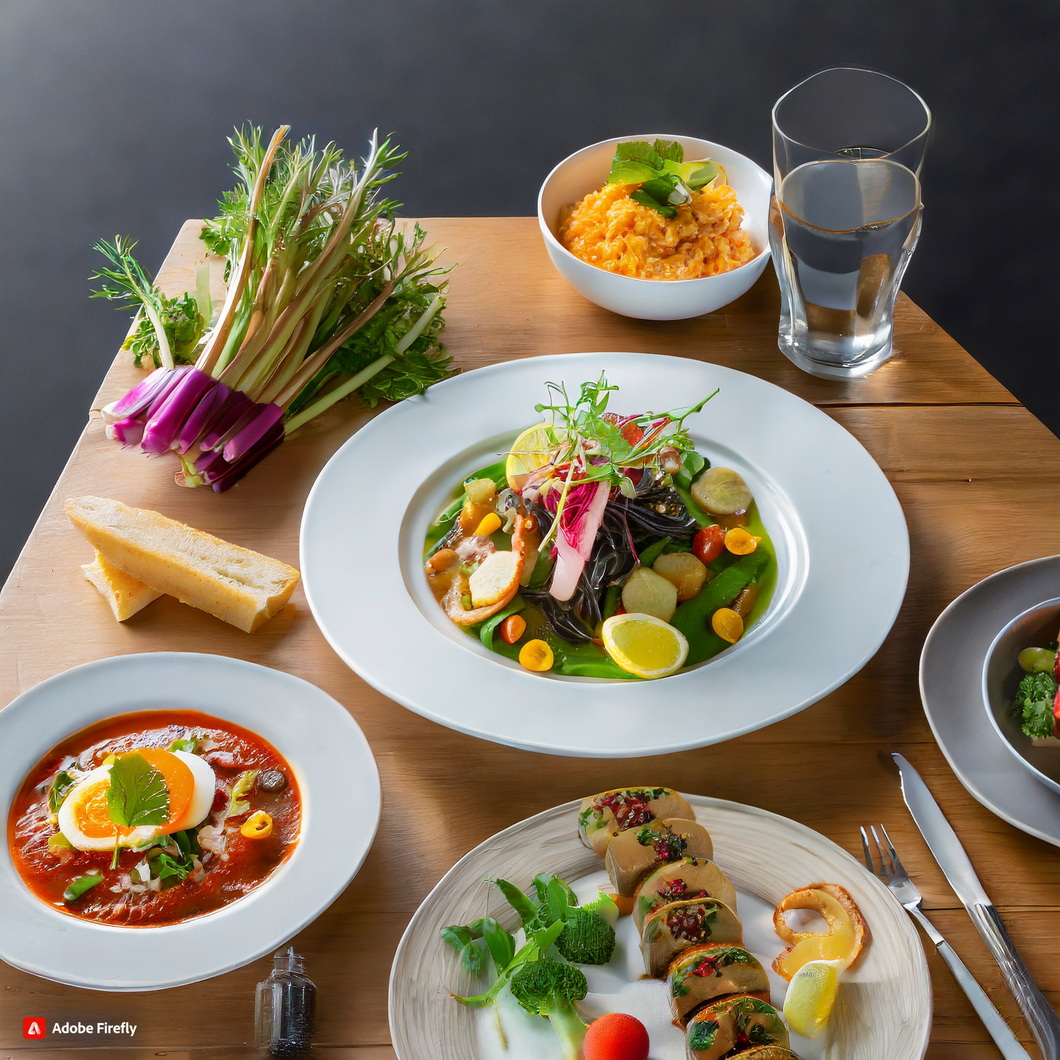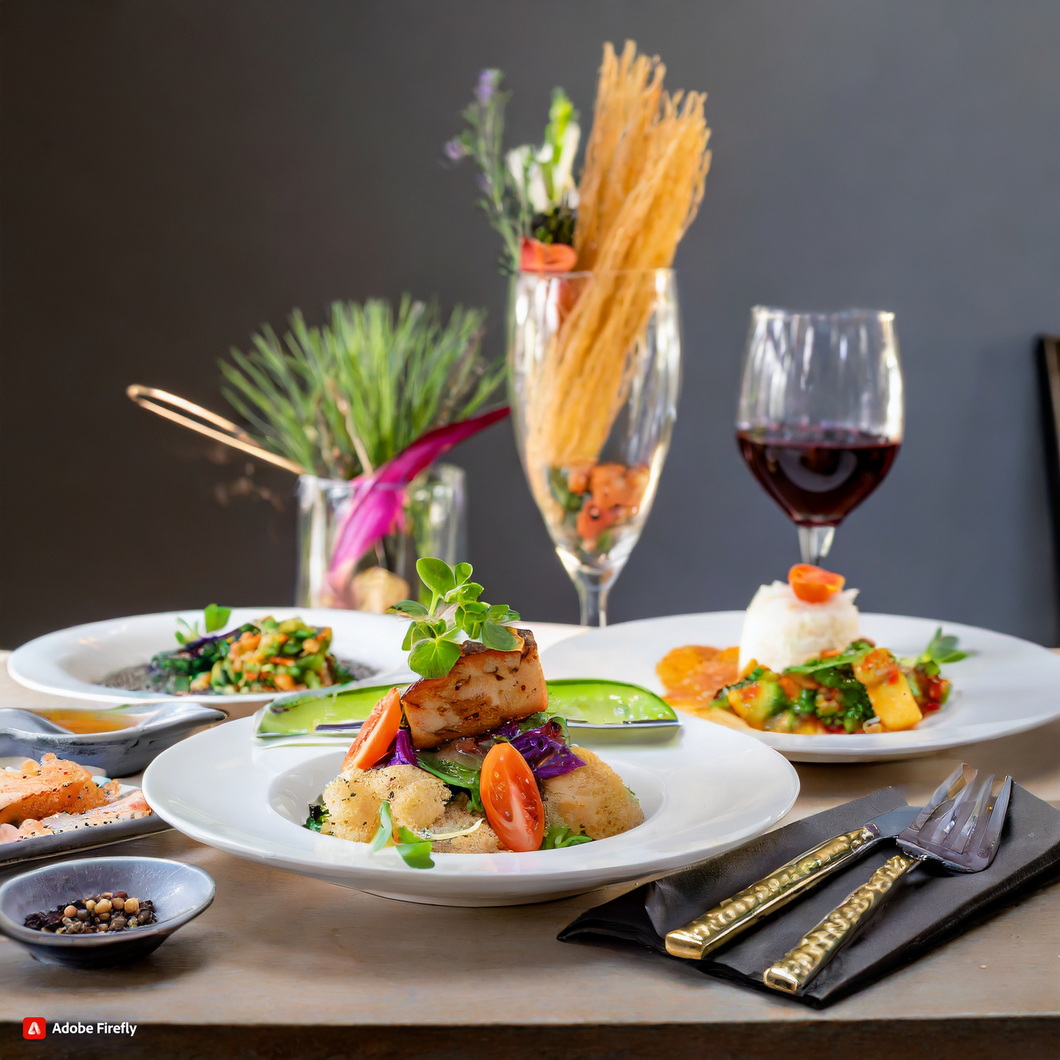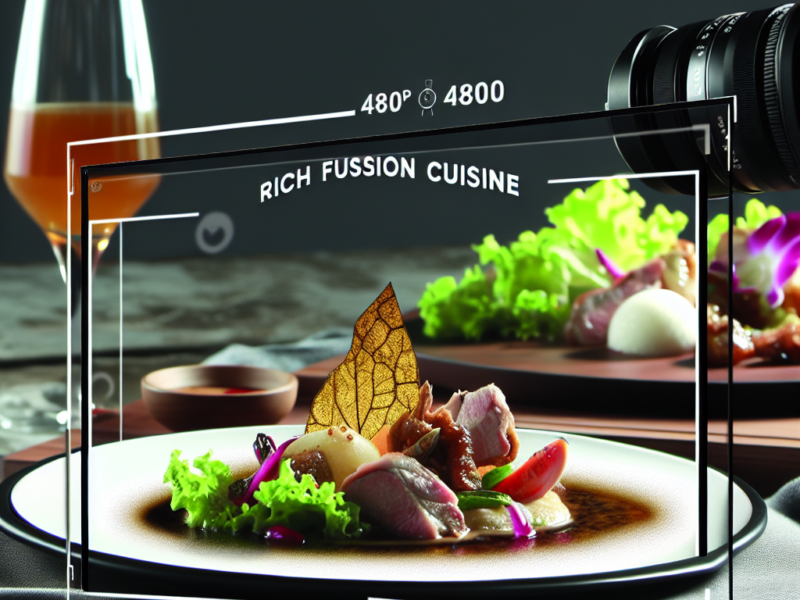Introduction
Culinary Fusion Unveiled is a fascinating exploration of the origins and evolution of Fusion Cuisine Concepts. This culinary trend has become increasingly popular in recent years, blending elements from different cultures and traditions to create unique and innovative dishes.

In this article, we will delve into the history of fusion cuisine, tracing its roots and examining how it has evolved into the diverse and dynamic culinary landscape we know today. Join us as we uncover the origins of fusion cuisine and discover the cultural influences and creative techniques that have shaped this exciting culinary movement.
The History of Fusion Cuisine: How Different Cultures Influenced the Creation of Fusion Dishes
Have you ever tried a dish that combines elements from different cuisines and wondered how it came to be? This is the magic of fusion cuisine, a culinary trend that has taken the world by storm. But where did this concept originate from? Let’s take a journey through the history of fusion cuisine and discover how different cultures have influenced its creation.
The origins of fusion cuisine can be traced back to ancient times when trade and exploration brought people from different cultures together. As they interacted and exchanged ideas, their culinary traditions also merged, resulting in the birth of fusion dishes. For example, the Silk Road, a network of trade routes that connected Asia, Europe, and Africa, played a significant role in the fusion of Chinese, Indian, and Middle Eastern cuisines.

Fast forward to the 16th century, and we see the Spanish conquistadors bringing new ingredients from the Americas to Europe. This led to the fusion of European and indigenous cuisines, giving rise to dishes like paella, which combines Spanish rice with indigenous seafood and spices. Similarly, the Portuguese introduced chili peppers to India, which revolutionized the country’s cuisine and gave birth to dishes like vindaloo.
In the 19th century, the colonization of countries by European powers also had a significant impact on fusion cuisine. The British, for example, brought their love for tea to India, but the locals added their own twist by infusing it with spices like cardamom and ginger, creating the famous masala chai. The French colonization of Vietnam also resulted in the fusion of French and Vietnamese cuisines, giving rise to dishes like banh mi, a sandwich made with French baguette and Vietnamese fillings.
Moving on to the 20th century, we see a surge in immigration, leading to the fusion of cuisines in countries like the United States. With people from different backgrounds settling in one place, their culinary traditions also merged, resulting in dishes like Tex-Mex, a fusion of Mexican and American cuisines. Similarly, the fusion of Japanese and Peruvian cuisines gave birth to Nikkei cuisine, which combines Japanese techniques with Peruvian ingredients.
In the 1970s, the term “fusion cuisine” was coined by chef Norman Van Aken, who blended different cooking styles and ingredients in his dishes. This marked the beginning of the fusion food trend, which gained popularity in the 1980s and 1990s. Chefs like Wolfgang Puck and Roy Yamaguchi popularized fusion cuisine in the United States, incorporating elements from Asian, European, and American cuisines in their dishes.
Today, fusion cuisine has become a global phenomenon, with chefs all over the world experimenting with different flavors and techniques. The rise of social media has also played a significant role in the popularity of fusion cuisine, with food bloggers and influencers sharing their unique fusion creations with the world.
In conclusion, the history of fusion cuisine is a testament to the power of cultural exchange and the evolution of culinary traditions. From ancient trade routes to modern-day immigration, different cultures have influenced the creation of fusion dishes, resulting in a diverse and exciting culinary landscape. So the next time you try a fusion dish, remember the rich history behind it and savor every bite.
Exploring the Evolution of Fusion Cuisine: From Traditional to Modern Fusion Concepts
Have you ever tried a dish that combines elements from different cuisines, creating a unique and delicious flavor? If so, then you have experienced the magic of fusion cuisine. This culinary trend has been gaining popularity in recent years, but its roots can be traced back to centuries ago. Read Healthy Dessert Recipes.
Fusion cuisine is the blending of different culinary traditions and techniques to create new and innovative dishes. It is a reflection of the ever-evolving nature of food and how it adapts to different cultures and influences. The concept of fusion cuisine may seem modern, but its origins can be found in ancient times.

One of the earliest examples of fusion cuisine can be seen in the Silk Road, a network of trade routes that connected Asia, Europe, and Africa. This exchange of goods and ideas also brought about the fusion of different culinary traditions. Spices from India, noodles from China, and rice from Persia all made their way into the cuisines of different countries, creating unique and flavorful dishes.
In the 16th century, the Spanish conquest of the Americas introduced new ingredients to Europe, such as tomatoes, potatoes, and chili peppers. These ingredients were then incorporated into traditional European dishes, resulting in a fusion of flavors. This fusion cuisine was further influenced by the colonization of countries like India, Indonesia, and the Philippines, where European cooking techniques were combined with local ingredients. Read Lunch for Weight Loss.
Fast forward to the 20th century, and fusion cuisine started to gain popularity in the United States. With the influx of immigrants from different countries, American chefs began experimenting with different flavors and techniques, resulting in dishes like Tex-Mex, a fusion of Mexican and American cuisine, and California rolls, a fusion of Japanese and American cuisine.

In the 1970s, a new wave of fusion cuisine emerged with the rise of nouvelle cuisine, a movement that focused on using fresh and local ingredients. Chefs like Wolfgang Puck and Jean-Georges Vongerichten started incorporating Asian flavors into their dishes, creating a new style of fusion cuisine known as “Asian fusion.”
The 1980s saw the birth of another popular fusion cuisine, known as “Tex-Asian.” This style combined the bold flavors of Tex-Mex with the delicate flavors of Asian cuisine. Dishes like Korean BBQ tacos and Thai chicken enchiladas became popular in restaurants across the United States. Read easy Healthy Lunch for Weight Loss.
In the 1990s, fusion cuisine continued to evolve, with chefs experimenting with different combinations of flavors and techniques. This led to the creation of dishes like sushi burritos, Korean BBQ pizza, and Indian-inspired tacos. These dishes not only showcased the creativity of chefs but also reflected the diverse cultural influences in the United States.
Today, fusion cuisine has become a global phenomenon, with chefs all over the world incorporating elements from different cuisines into their dishes. The rise of social media has also played a significant role in the popularity of fusion cuisine, with food bloggers and influencers sharing their unique and innovative fusion creations.
In conclusion (Fusion Cuisine Concepts), fusion cuisine is not a new concept, but rather a reflection of the ever-changing nature of food and how it adapts to different cultures and influences. From the Silk Road to modern-day fusion dishes, this culinary trend has evolved and continues to evolve, showcasing the creativity and diversity of chefs and their cuisines. So the next time you try a dish that combines different flavors and techniques, remember that you are experiencing the magic of fusion cuisine.
Q&A – Fusion Cuisine Concepts
Q: What is fusion cuisine?
A: Fusion cuisine is a style of cooking that combines elements and techniques from different culinary traditions or cultures to create new and unique dishes.
Q: What are some examples of fusion cuisine?
A: Some examples of fusion cuisine include dishes that combine Asian and Latin American flavors, such as Korean tacos or sushi burritos, or dishes that blend French and Vietnamese influences, such as banh mi sandwiches with pâté and baguettes.
Conclusion for Fusion Cuisine Concepts
In conclusion for Fusion Cuisine Concepts, Culinary Fusion Unveiled provides a comprehensive exploration of the origins and evolution of Fusion Cuisine Concepts. Through its examination of cultural influences, historical events, and culinary techniques, the book sheds light on the complex and dynamic nature of fusion cuisine.
It also highlights the creativity and innovation of chefs who have embraced fusion cuisine, and the impact it has had on the culinary world. Overall, this book is a valuable resource for anyone interested in understanding the origins and development of fusion cuisine.
Please follow us on linkedin. You can learn all best canadian food recipes you can check our Culinary 1TouchFood Youtube and Telegram 1TouchFood page. Don’t forget Fighting Obesity Magazine and Radio Cooking.

